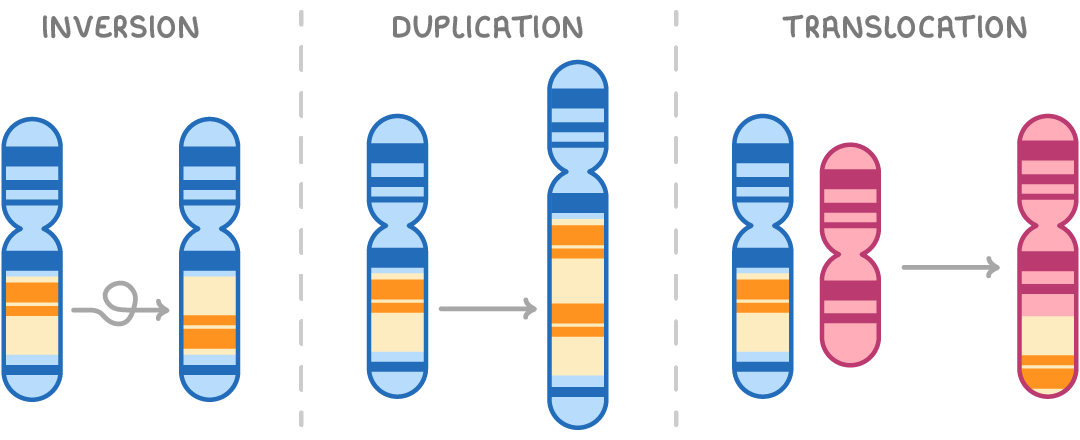Gene Mutations
This lesson covers:
- Gene mutations in body cells and gametes
- Causes of mutations
- Substitution mutations and their effects
- Other types of gene mutations
Gene mutations in body cells and gametes
Gene mutations are permanent changes in the DNA sequence that makes up a gene. These mutations involve changes in one or more DNA base within a gene.
Differences between mutations in body cells and gametes:
- Mutations in body cells can disrupt normal functions like cell division, potentially causing cancer.
- Mutations in gametes can be inherited by offspring, while those in body cells cannot.
Causes of mutations
Mutations can arise naturally during DNA replication, but at a low frequency. The rate of mutations can be significantly increased by external factors, known as mutagens.
The main types of mutagens include:
- Ionising radiation (e.g. X-rays) - This can break DNA strands or alter its structure.
- Chemical mutagens (e.g. benzopyrene in cigarette smoke) - These can modify DNA bases or interfere with DNA metabolism.
While mutations provide the genetic diversity necessary for evolution, they are often detrimental, leading to the production of abnormal proteins and disease phenotypes, including cancer.
Substitution mutations and their effects
Substitution mutations occur when one DNA base is replaced by another within the gene's sequence.
The outcomes of substitution mutations can vary:
- May create one of the three stop codons - This prematurely terminates polypeptide synthesis, which may significantly change the structure of the protein, making it non-functional.
- May create a codon for a different amino acid - This changes the protein's amino acid sequence and possibly its shape and function as well.
- May create a codon for the same amino acid - This type of ‘silent’ mutation does not affect the protein product or the phenotype, due to the degenerate nature of the genetic code.
Other types of gene mutations
There are several other types of mutation.

These types of mutations include:
- Inversions – This is when a segment of DNA becomes detached and then reattaches in the opposite direction, inverting the sequence of codons and thus the amino acid sequence.
- Duplications – This is when one or more DNA bases are repeated, altering the reading frame of the codons and causing a frame shift to the right.
- Translocations – This is when a segment of DNA is moved from one chromosome to another, which can interfere with gene expression and regulation, and lead to certain types of cancer.
These types of rearrangements can have significant impacts on gene expression and the synthesis of proteins.